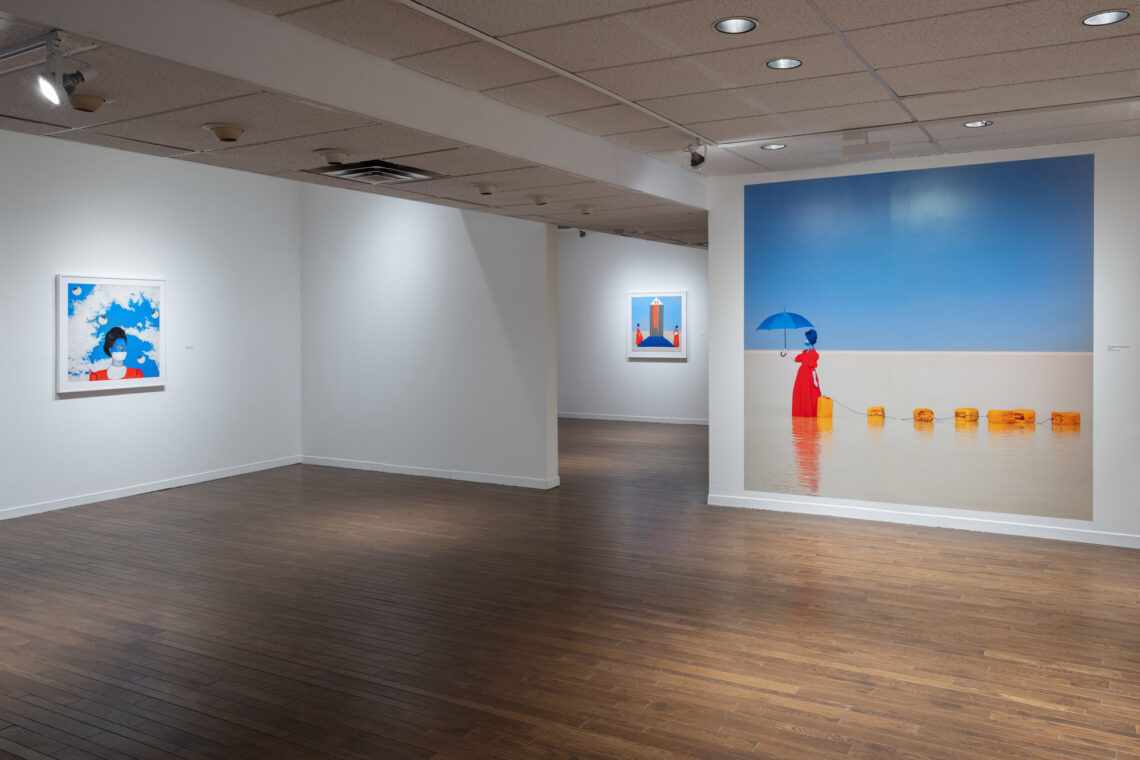Learn About Textiles
The Textile Museum of Canada supports lifelong learning by offering opportunities for active engagement through public programs and self-directed exploration with our online resources.
We have public programs, online resources and Learning Hub staff readily available to help you dive deep into our exhibitions or learn more about your own textiles and how to care for them.
Recordings of our rich variety of programs, workshops, artist spotlights, and collection spotlights are also available!
Please keep an eye on our What’s On page for upcoming programs!

The Learning Hub is home to our Textile Reuse Program, reference library, and activities for all-ages! The space is open during regular Museum hours; Hands-on activities including tapestry weaving, rug-hooking, and yarn painting are always subject to availability, on a first-come first-serve basis.
01. Textile Learning Hub
We are excited to welcome you to the Textile Learning Hub on the second floor! The Learning Hub offers activities that link the Museum Collection, exhibitions, textile making and the library together in a hive of exploration, research, discovery and creation.
Our newly renovated space is home to studio activities, workshops, a reference library, and our reimagined Reuse Program.
Since September 2021, our Reuse Program has provided access to affordable textile materials for makers and artists. This is made possible by generous donations, and our volunteers who help with sorting and pricing every week. What began as our More Than Just a Yardage Sale in 2005 has evolved into a program dedicated to diverting textile waste from the landfill.
As of September 2023, our customers have repurposed more than 10,000 lbs of fabric, yarn, thread, lace and more!
If you’re interested in donating, you can learn more HERE!
You can continue learning without leaving the comforts of home. Our educational demos, Sustainable Textile Teach-in series, and past workshop recordings are now available online!

Please email us at library@textilemuseum.ca
with specific information requests.
02. Library
The Library at the Textile Museum of Canada offers a unique reference collection of resources about textiles and textile traditions from around the world, including over 4,500 books, 20 journal titles, numerous subject files, and a small collection of DVDs and videos.
Our Library is open to the public for research during the Museum’s Open Hours, and our online catalogue of books and periodicals can be accessed anywhere in the world. This was made possible with the support of the William R. and Shirley Beatty Charitable Foundation.
The renovation on the Museum’s second floor has positioned the Library to be a key part of the new Textile Learning Hub, closely integrated with our education and collection activities.
Since 2022, the space adjacent to the Library in the Learning Hub provides a comfortable reading centre for visitors to access magazines, periodicals and materials relating to current exhibitions. Here, the Museum’s online collection of 15,000 textiles is available to access through a computer terminal.

03. Public Programs
We are offering a rich variety of hybrid online and in-person programming such as workshops, artist talks and tours, as permitted by provincial COVID-19 guidelines.
Our programs extend beyond our walls, across Toronto. We facilitate workshops for families and youth at Toronto Public Library branches and partner with social agencies through our Community Makers program to develop workshops that meet the needs of the communities that they serve.










